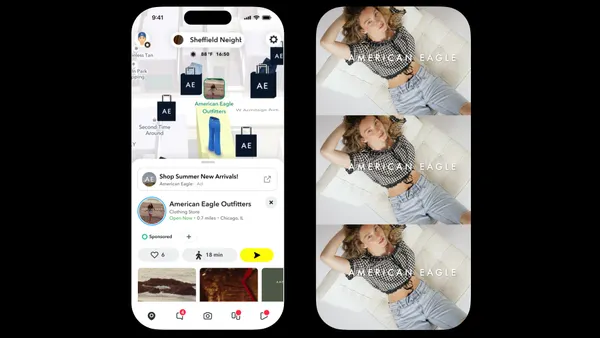Dive Brief:
-
Tommy Hilfiger on Thursday announced it has established STITCH, a tech incubator dedicated to digitizing the company's design process. The company plans to completely transition to the company's 3D design platform by the time its Spring 2022 collection debuts.
-
The brand will launch a capsule collection in Fall 2020 that will be designed and sold digitally, including "products modeled on virtual avatars," the company explained in a press release. The Fall 2020 season will also include men's dress shirts that are 100% 3D designed and don't require sample production. The effort is "the next step in uncovering the full potential of sample reduction, time savings, cost savings and sustainability," according to the release.
-
Employees in more than half of Tommy Hilfiger's apparel divisions in its Amsterdam headquarters have been trained in 3D design through STITCH Academy, and all product teams, including designers, pattern makers, fit technicians, product developers and merchandisers will receive similar training. The company's proprietary tools include a digital fabric, pattern and color asset library, 3D presentation tools and rendering technology.
Dive Insight:
Hilfiger's move toward digital design could give it an edge in an apparel market that's been plagued by slumping sales and bankruptcy filings.
The brand is putting considerable resources behind its broader digital shift, after opting to close two prominent store locations this spring: its Fifth Avenue store in New York City and its store on Collins Avenue in Miami. That announcement was described as a "Strategic objective to further reach and engage with digitally-savvy North American consumers," CEO Daniel Grieder said in a statement sent to Retail Dive at the time. Parent company PVH Corp. announced an ambitious corporate responsibility strategy in May, planning to meet 15 sustainability targets including reducing landfill waste by 2030.
Hilfiger has also adopted a see-now, buy-now format for its runway shows, after a few years of experimentation and sales success. The instantaneous runway-to-retail experience allows brands to quickly capitalize on trends and customer demand. Combined with Hilfiger's new digital design push, the company could foster customer loyalty for its forward thinking.
The reduced time from concept to market could make a big difference for the company's bottom line, too. Take for instance Betabrand, which crowdsources design ideas for its apparel and footwear. Betabrand can design and prepare pre-sale products like shoes, from design to pre-sale, in five days or less thanks to its 3D design technology, reducing its development time from 18 months.













